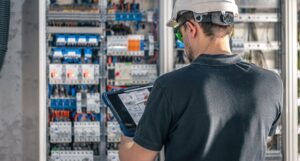For optimal energy efficiency and server performance, data centers use ‘containment’ strategies to keep cool intake air separated from servers’ warm exhaust. Data centers work best when the server supply air and exhaust air do not mix, since allowing warm air to cycle back in to servers’ cool air supply reduces cooling system effectiveness.
Containment originally entailed simply separating hot and cold aisles — in other words, arranging servers so that their cool air intakes faced one aisle while their exhaust vents faced a separate aisle. As rack densities increased, however, standard HVAC distribution systems for cooling air became inadequate. High-density racks require high air flow to enable sufficient server cooling — and containment is often used to control and focus that air flow.
Proper containment enables more equitable air flow sharing among server racks and improves the distribution of air within the cold aisle. Containment isn’t a one-size-fits-all strategy, though. It comes in many flavors, most of which are variations on hot or cold aisle containment. Rack containment is another.
Some very simple containment enhancements — for example, using computer room air conditioner (CRAC) plenums, end-of-row doors, aisle curtains, and other solutions — are usually very cost effective. Energy performance improvements can lead to fast payback.
Looking at row-containment, there are two typical approaches. The effectiveness of one approach or another depends on other design attributes. For example, a data center that has a raised floor with under floor cooling may be an ideal environment to utilize cold aisle containment versus a room without a raised floor. A data center that uses in-row cooling may realize some performance improvements when hot aisle containment is implemented.
Determining which approach is best for your data center requires careful evaluation and a holistic understanding of your system and your needs.










